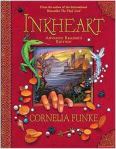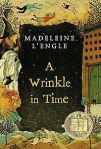 Title: Catching Fire
Title: Catching Fire
Trilogy: The Hunger Games
Author: Suzanne Collins
Publisher: Scholastic Press
Genre: Young Adult Fiction/Romance/Action
Ah, here I am again, basking in the awesomeness of this book, and still trying to get myself calm from the aftershock of the ending of this book two days later. I find it hard to describe another book with this magnitude of sheer perfection. I guess the burrito thing is already used, so I’ll have to describe it in a different way… Ah-Ha! Yes, a root beer float. Think of this book as one of these heavenly concoctions, except in terms of literature. And this root beer float has not just root beer, but every kind of soda imaginable, mixing in a way that packs a punch, but not a Jackie Chan break-every-bone-in-your-body punch. This book has a lot more romance in it than the first book. But not in a way that seems fake. In a way that really makes you feel the character’s anger, fear, despair, confusion, and maybe their loneliness. In fact, I actually got teary, angry, confused and lonely myself in certain points of the book. It just shows you what a skilled author can do. I think there was about three or four moments in the book where I felt like I was going to weep, yell, punch a hole in the wall, or do some other crazy thing that you would never expect while reading any book, especially a fiction one, where you know it’s all made up. This book was so… honest. It was so outrageously believable I had to remind myself every once in a while that this is fiction – that it didn’t really happen. It’s not that it’s not totally futuristic; it’s just the way Collins tells it.
I realize that before I actually summarize this book, I’m going to have to make several things, mainly romance situations, a lot more clear than I did last time. I didn’t really think that it was very important. And it wasn’t in that book. But now it is. And if you want to read all my reviews before you read the series itself (which is fine), you need to really understand this stuff.
When Katniss was left to fend for the rest of her family after her father died in a mine accident (district 12 is the mining district), she leaned towards the woods, the only place where she really felt comfortable. Of course, it was forbidden to go in there, since there was a fence and everything around the district, but that didn’t stop her – she hunted, gathered berries, picked edible plants, and made some money selling things at a full-time black market, dubbed the Hob. One day, she came across some traps, and was scared out of her wits when a sixteen year old boy showed up and accused her of stealing from his traps. He asked her name, and Katniss said it so quietly the boy thought she said “Catnip.” She later found out that the boy’s name was Gale, and though they saw each other often in the woods, they were never really affiliated with each other. Little did they both know that soon they would rely on each other heavily as hunting partners. They became not only friends, but unbelievably important to each other, and not just for work. They were not lovers, though. Yet.
Gale was, truthfully, not incredibly important in the first book, save for some of his skills that rubbed on Katniss and helped her during the games. No, the second main character was highly understated in my last review, which was a mistake. Peeta, the mild-mannered, strong, flirty, and overall hot sixteen year-old is chosen along with Katniss to fight in the Hunger Games (don’t worry, I’m getting to the story of the second book, not the first). The story behind their awkward connection starts with bread. Peeta is the baker’s son, and very skilled at decorating and, well, baking. One night, Katniss was out of the house, her family was starving, and they were going to die if they didn’t get food immediately. So on her walk, on a rainy night, she walks past the baker’s house. A boy stands there, with blond hair, blond eyelashes, and a substantial chest and shoulders. He goes back inside under the command of his mother. His mother is a crazy, deranged woman. She goes so far as to beat him, and yells at him to feed the hogs. So he emerges in the rain again, carrying a burnt loaf of bread, that he supposedly burned himself. He takes a few little bits of crust off the bread until the woman stops giving him the evil eye, then hurriedly tosses the bread to Katniss and disappears inside. Katniss is surprised, grateful, and a little bit confused. Why did Peeta Mellark, a boy she barely knew, risk a beating to give her bread? It is soon revealed before the first games when he declares himself to be in love with her.
In this next epic, astonishing, mind-blowing account, Peeta and Katniss are living in luxury. They have enormous houses – the houses of the Hunger Games victors. They have to go on a victory tour throughout the other districts, possibly the cruelest part. The tour is despicable because all the other districts have to treat it like it’s a celebration. Remember – these are the districts whose tributes they killed. So imagine Katniss’s sheer panic as President Snow himself comes to her house and says that the way she ended the last hunger games is causing talk of an uprising – a rebellion against the capital. Katniss is both surprised and happy. Until, of course President Snow says that if she does not halt the uprisings, he will have Gale killed. She then later on learns that she has to go with Peeta again – to another Hunger Games.
When they get to the capital, Katniss knows she will not be going up against inexperienced kids – that they will have to battle 22 victors of previous Hunger Games.
There have been rumors of rebellion passed around by Katniss’s friends and her prep team. Her Mockingjay pin that she wore to her last games has become the probable symbol of rebellion. So her spirited stylist, Cinna, designs a dress that transforms into a Mockingjay-like outfit. He is beaten and arrested for this deed that the Capitol considers a crime, leaving Katniss shaken right before she enters the arena. During the games Katniss makes allies, there are over fifteen deaths in only two days, and she experiences many heartfelt losses and tragedies. The arena itself reveals a surprise in itself, having a very intricate setup, and there are unexpected friendships, sacrifices, and an ending that not only knocks you out of you seat, but leaves you scrambling back to the bookstore or library for more.
I honestly don’t believe that the next book could be better than this. This is the part where I get totally colloquial and say “WWWWOOOOOOOOOAAAAAAAAAHHHHHHHH!!!!!!!!” after I reflect, expectantly peacefully, on the time I spent reading this book, and it comes BLASTING INTO MY MIND LIKE A HEAT GUIDED NUCLEAR MISSILE, KNOCKING OUT EVERY SENSE OF SANITY AND CALMNESS AND EXPLODING IN MY FACE, BLOWING ME UP LIKE A TRUCKLOAD OF DYNAMITE!!! Okay, got it all out of my system.
I believe I started that last paragraph saying that I honestly don’t think that the next book could be better than this. And I simply don’t. Collins has already done that amazing, uncommon, unexpected thing – she has created a sequel that actually improves upon the first book. That was one thing with Star Wars – the battle on the ice planet of Hoth and the moment when Darth Vader said “Luke, I am your father” both created explosive moments just enough to pass the Death Star blowing up. But that was in a movie. Not a book. I’ll say one thing – only the greatest authors this good planet earth has sired have created sequels better than books that already blew you away. Those are authors that honestly enjoy doing their work, and feel it coming from their own minds, and not having to look up on Google “hottest book topics of the year”. They make the hottest book topics of the year. Take JK Rowling (pronounced Rolling) for example – she started out literally scribbling notes on scratch paper and now she’s the richest author in the world. So nothing would surprise me.
I think it’s needless to say that, overall, thought that this book was completely awesome. I see no room for mistakes whatsoever, except I wish that the book was a gazillion pages long (shame on you, Collins!). I would again, because this was a moderately violent book with slightly dark and sinister moments, not recommend this book to anyone ages thirteen and under. I would, on the other hand, recommend this book to absolutely anyone over that age who likes, romance, action, and well, other books like this.
Posted by Fred Reads
 Title: How To Bake A Chocolate Soufflé
Title: How To Bake A Chocolate Soufflé



 Title: The Last Book in the Universe
Title: The Last Book in the Universe



